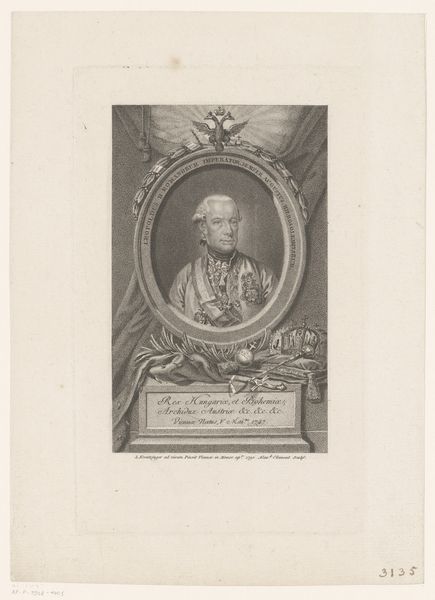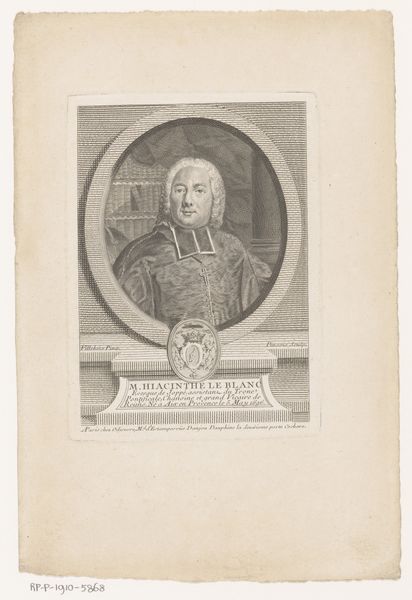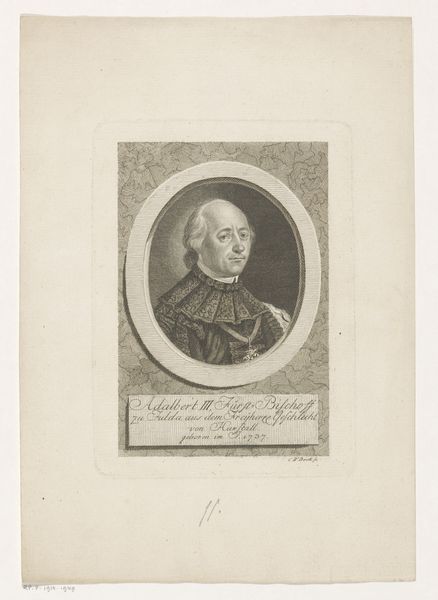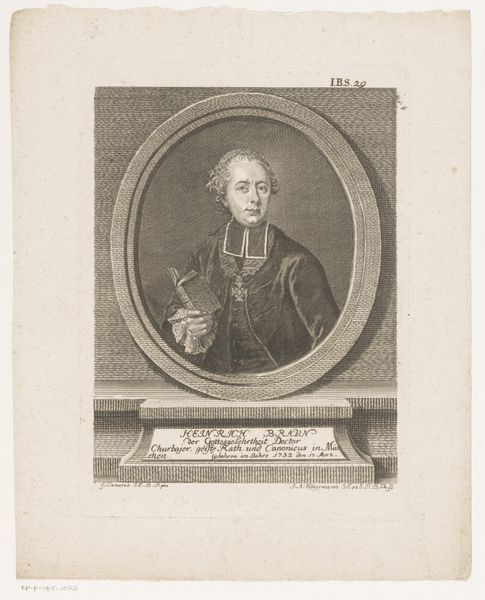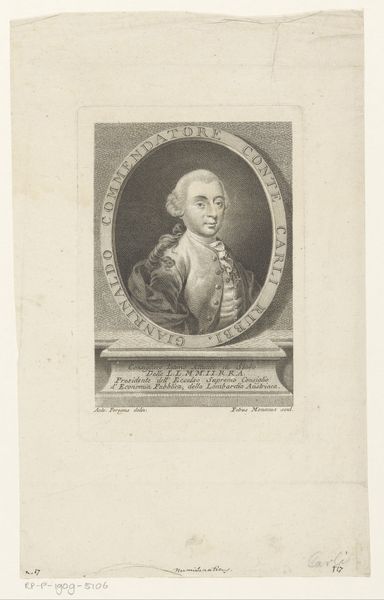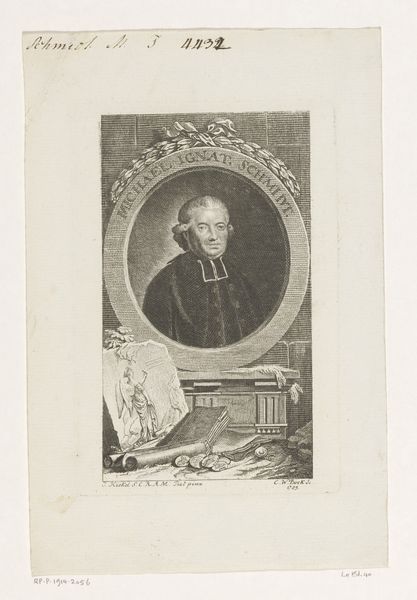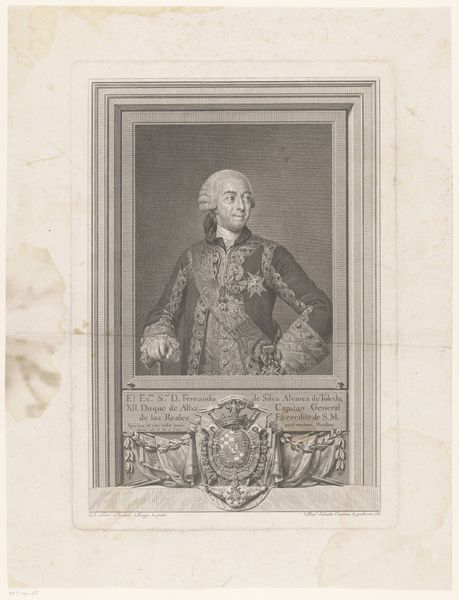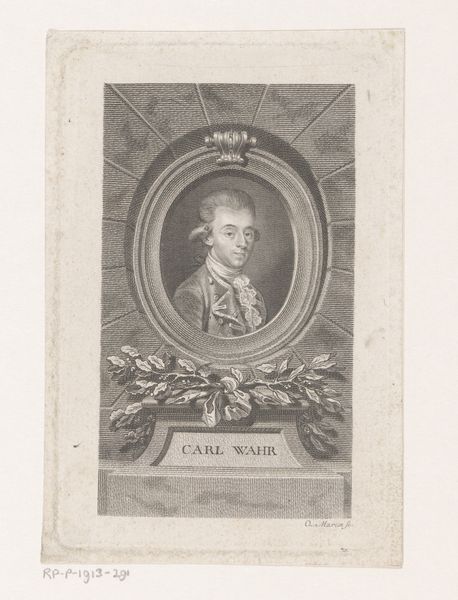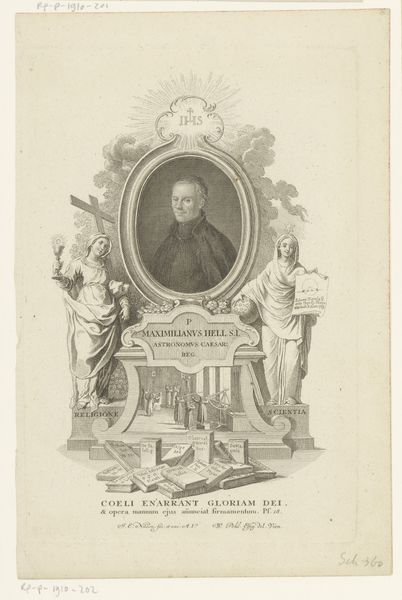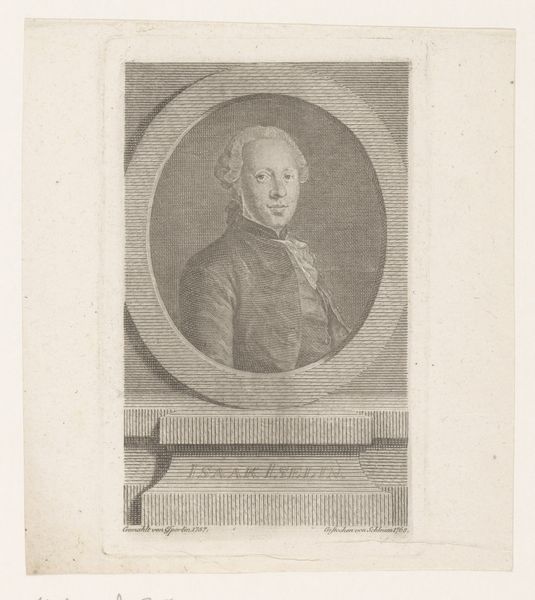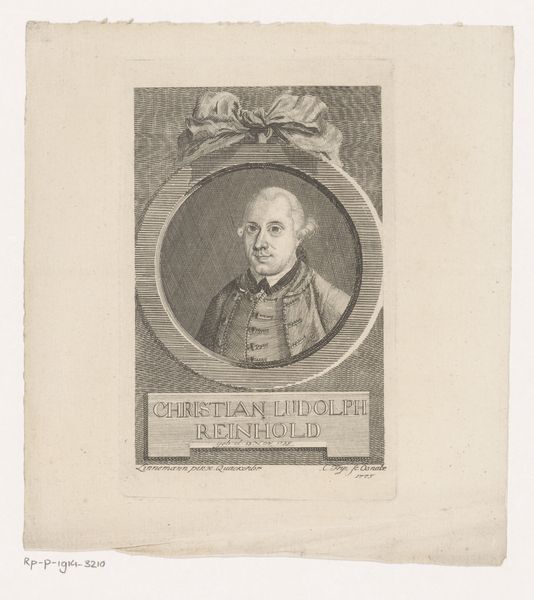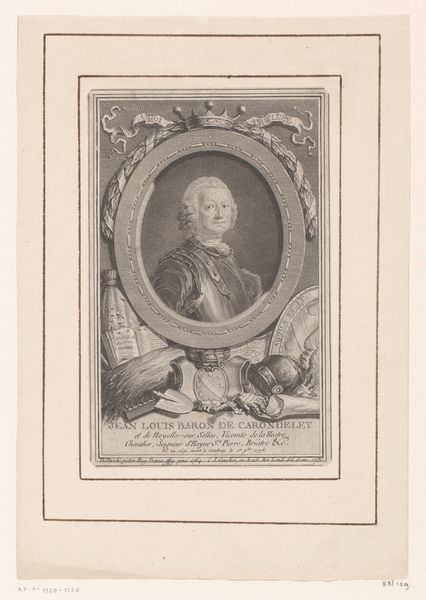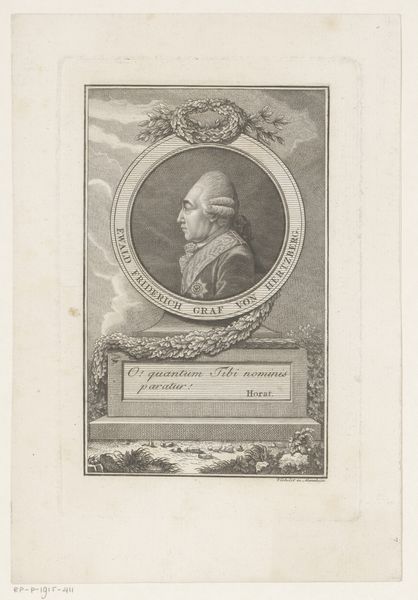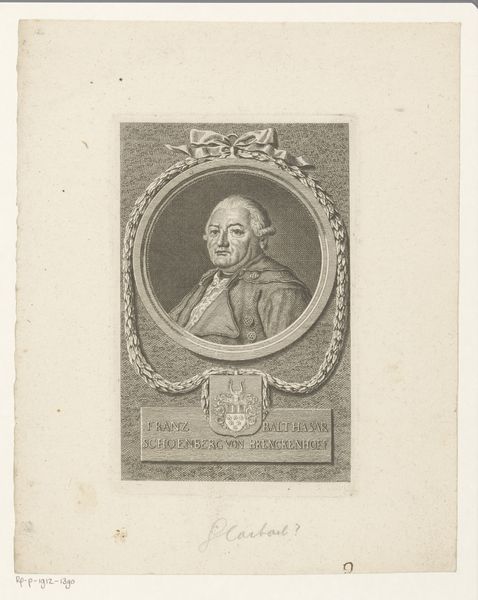
Dimensions: height 242 mm, width 171 mm
Copyright: Rijks Museum: Open Domain
Editor: This is a print entitled "Portret van Franz Balthasar Schönberg von Brenkenhoff," dating from sometime between 1761 and 1789, by Carl Christian Glassbach. The subject has a stern look. What can you tell me about this engraving? Curator: The sternness, as you put it, speaks volumes. This isn't just a portrait; it's a carefully constructed image of power and social status during a period of intense social upheaval. Look at the detailed rendering of his clothing, the framing device...all of these visual cues work together to project an image of authority. Given that this was made in the late 18th century, what do you think this image says about the social hierarchy of the time and the role someone like Schönberg von Brenkenhoff would have played? Editor: It seems very much about solidifying status, a kind of declaration, almost like propaganda? But propaganda for whom? Curator: Exactly. This print functions as a form of self-preservation for the elite. Remember, this was an era where the Enlightenment's ideals of equality were gaining traction, threatening the established order. Images like these reaffirmed class distinctions and asserted the subject’s right to occupy a privileged position in society. Notice the landscape underneath; how does that reinforce his position? Editor: It looks like a building project, or maybe agriculture. Like he's overseeing something important that benefits society, almost philanthropic. Curator: Precisely. It links him to productivity, progress, and paternalistic governance, justifying his elevated status through supposed contributions to the common good. How might we view such a portrait through today's lens, considering issues of social justice and representation? Editor: I see the subject differently now. It makes me consider the ethics of portraying power without acknowledging its inherent inequalities. This makes me rethink the role portraits like this played and the assumptions they perpetuated. Curator: It's vital that we constantly question and re-evaluate such representations to dismantle any vestiges of inequality they uphold.
Comments
No comments
Be the first to comment and join the conversation on the ultimate creative platform.
